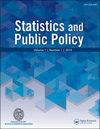Unraveling 2016: Comments on Gelman and Azari's 19 Things
IF 1.5
Q2 SOCIAL SCIENCES, MATHEMATICAL METHODS
引用次数: 0
Abstract
Scholars, pundits, and wonks will be studying the 2016 election for a long time. The sheer number of unprecedented elements of the 2016 U.S. elections produced some shock fatigue and left even seasoned election watchers scratching their heads (Fallows 2017). Drawing on insights from data science, statistics, and political science, Julia Azari and Andrew Gelman identify an impressive 19 potentially productive threads to pull on in our attempt to unravel the mysteries of 2016. There are so many features of the 2016 election that strayed from the status quo that, like a spoiled experimental design, it is challenging for scholars to explain exactly why the election turned in the surprising ways it did. To name just a few, 2016 included the first female major party candidate, the first modern election with evidence of undue foreign influence, the first election with a nominee who had no government or military experience of any kind, and the list goes on. While some may find the Gelman–Azari treatment dissatisfying for being too shallow on any individual point, too contrived, or just too long of a list, I submit that their holistic approach to breaking down the oddities of 2016 is necessary given the circumstances. Here, I focus on four of the items on their list—two that I find worth underscoring and strongly worthy of further exploration, and two that are perhaps too complex to pursue, even if perfectly valid.揭开2016:盖尔曼和阿扎尔的19件事评论
学者、专家和专家们将对2016年大选进行长期研究。2016年美国大选中前所未有的因素数量之多,让人感到震惊和疲劳,甚至让经验丰富的选举观察家也挠头(Fallows 2017)。Julia Azari和Andrew Gelman利用数据科学、统计学和政治学的见解,确定了19条令人印象深刻的潜在富有成效的线索,以帮助我们解开2016年的谜团。2016年大选有太多偏离现状的特点,就像一个被破坏的实验设计一样,学者们很难准确解释为什么大选会以令人惊讶的方式转变。仅举几个例子,2016年包括第一位主要政党的女性候选人,第一次有证据表明存在不当外国影响的现代选举,第一次由没有任何政府或军事经验的候选人参加的选举,名单还在继续。虽然有些人可能会觉得盖尔曼-阿扎里的待遇在任何一点上都太肤浅、太做作,或者只是太长了,我认为,考虑到目前的情况,他们打破2016年怪事的整体方法是必要的。在这里,我重点关注他们名单上的四个项目——其中两个我认为值得强调,非常值得进一步探索,还有两个可能过于复杂,无法追求,即使完全有效。
本文章由计算机程序翻译,如有差异,请以英文原文为准。
求助全文
约1分钟内获得全文
求助全文
来源期刊

Statistics and Public Policy
SOCIAL SCIENCES, MATHEMATICAL METHODS-
CiteScore
3.20
自引率
6.20%
发文量
13
审稿时长
32 weeks
 求助内容:
求助内容: 应助结果提醒方式:
应助结果提醒方式:


